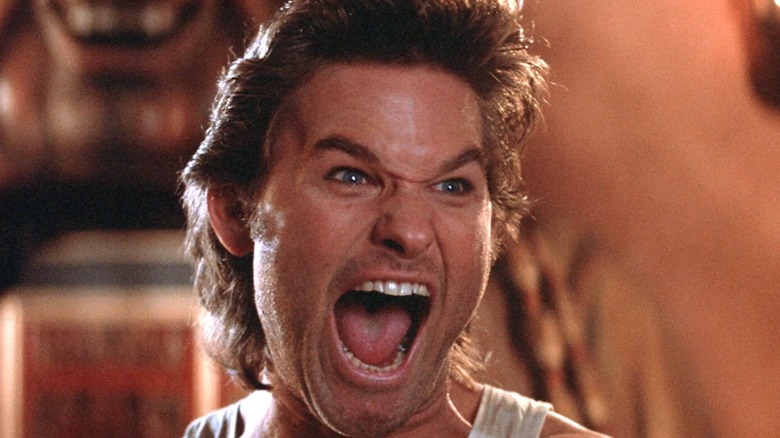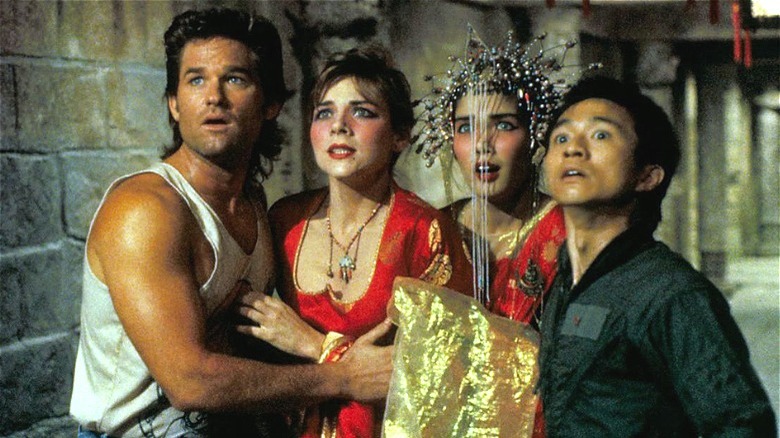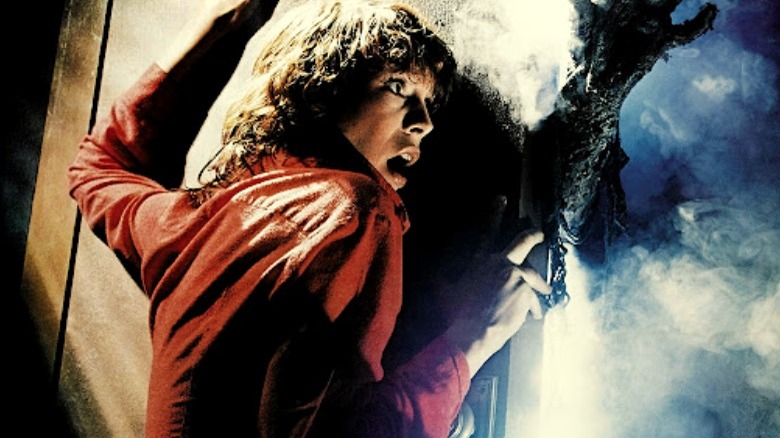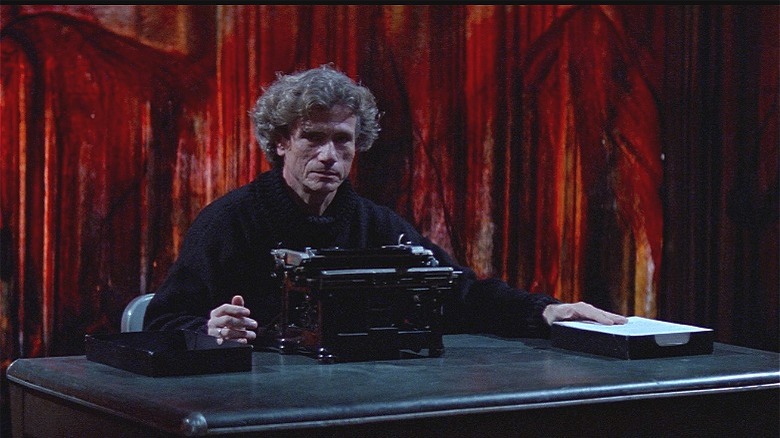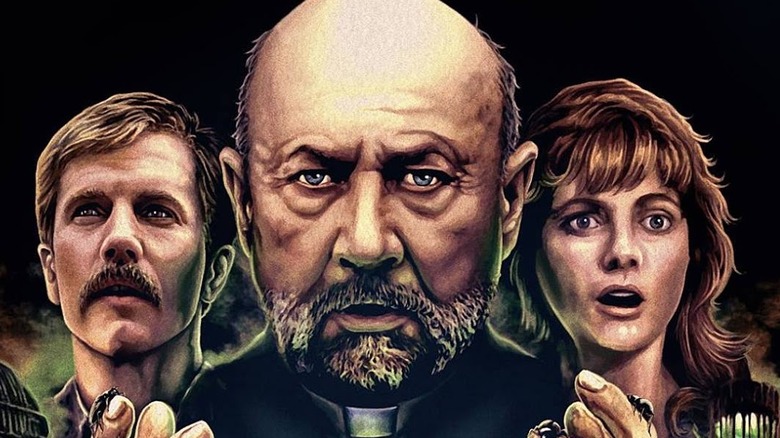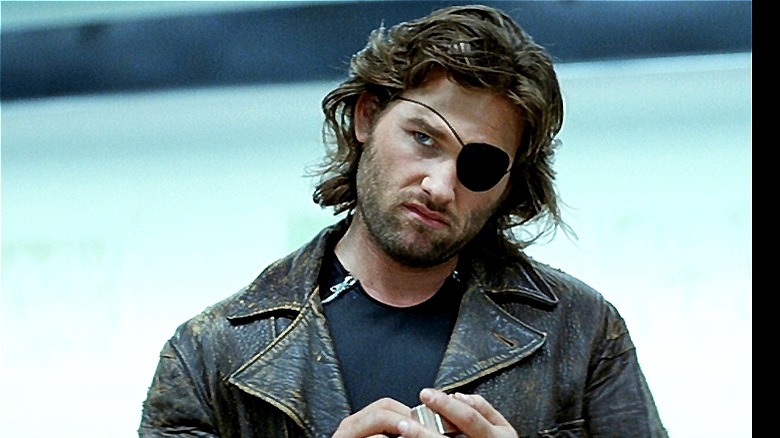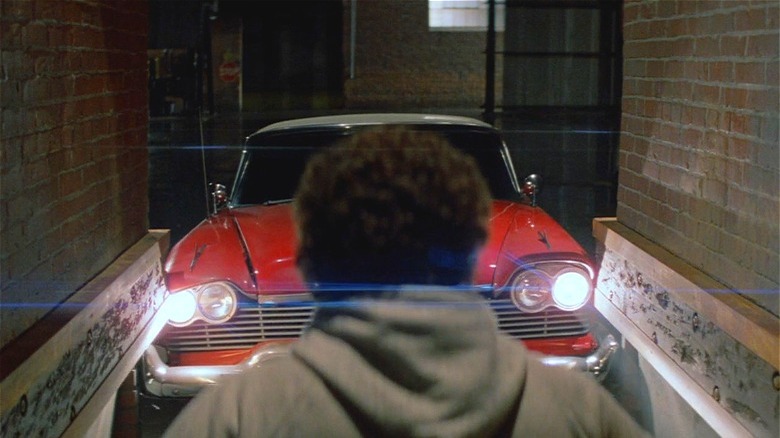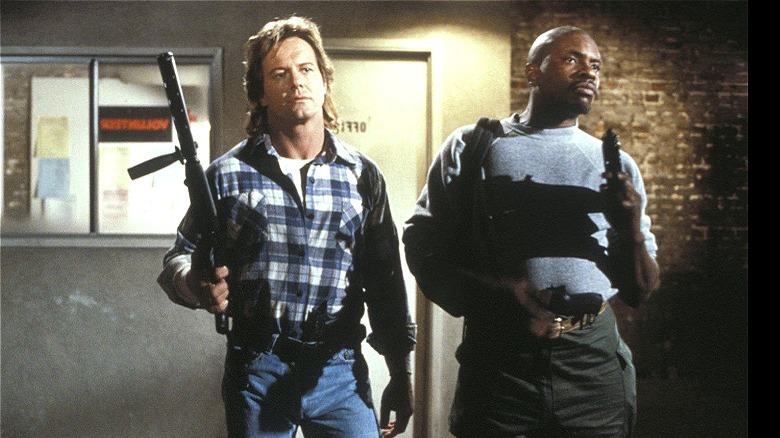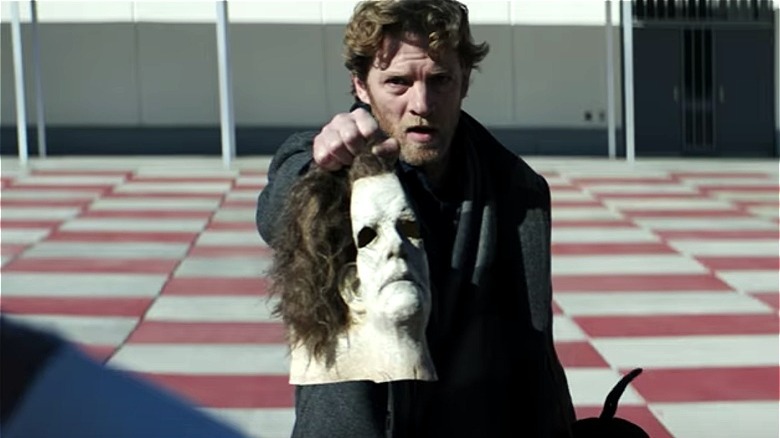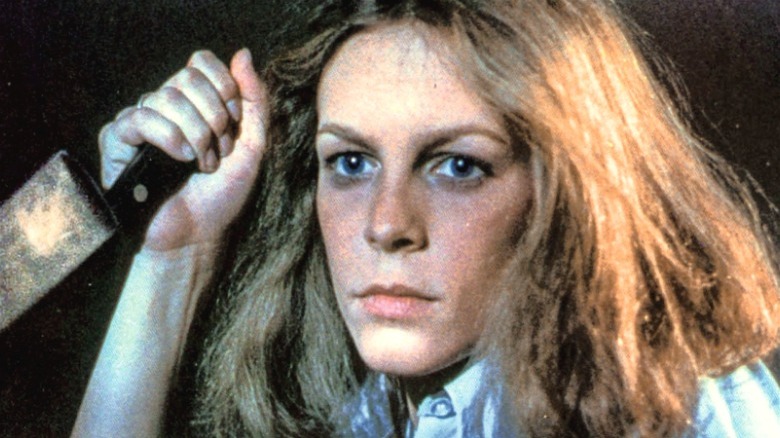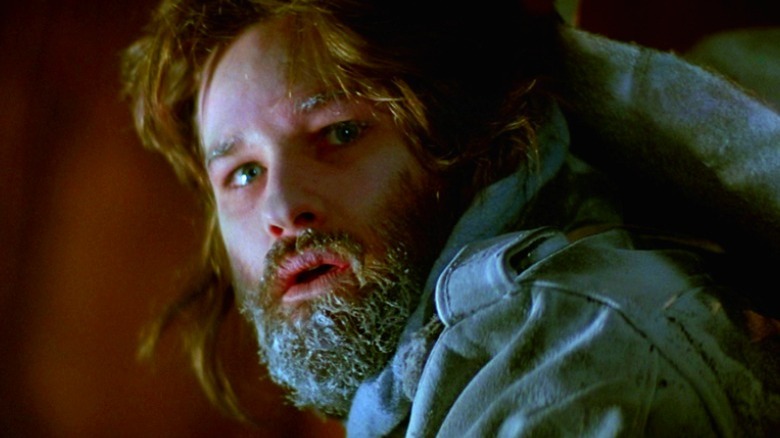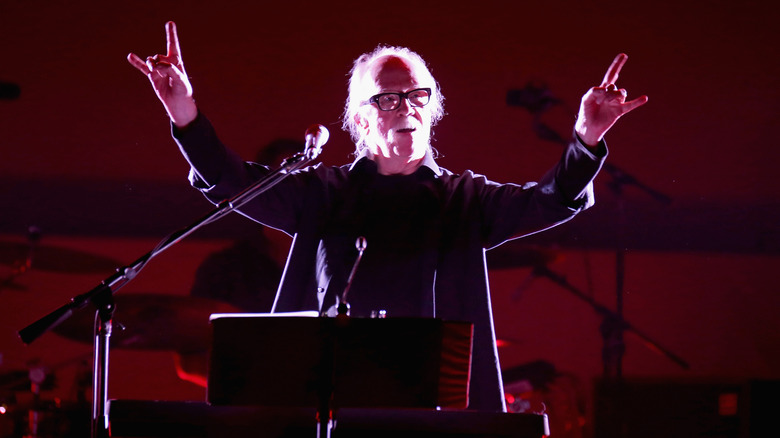Ranking John Carpenter's 10 Best Film Scores
A John Carpenter movie is as recognizable as an AC/DC track. There's a griminess to the cinematography, a cheap but immersive realness to the sets. Faces repeat: Kurt Russell, Jamie Lee Curtis, Donald Pleasance, and the rubbery visage of William Shatner. And then there's the music. Like Angus Young on guitar, we always know what a John Carpenter movie sounds like. There's a synthesizer at the heart of the score, sometimes flanked by Fender guitars and heavy percussion. Most of his compositions have something unique to them, something that makes them stand out.
The simplicity of Carpenter's early scores hides his training. Carpenter's father taught music, and he tried to get his son to learn the violin. But Carpenter never clicked with the classical strings. He moved on, looking for instruments he'd like better. Able to play the piano and bass guitar well enough to rock, Carpenter eventually used the synthesizer as a way of making big budget music on a shoestring. Like his films, John Carpenter seems to do his best with less. His film scores become part of his movies' histories, as recognizable as the on-screen thrills. These are his best.
10. Big Trouble in Little China
Composed with the help of frequent collaborator Alan Howarth, the score for 1986's "Big Trouble in Little China" avoids trapping itself with racist jingles. There are no out of place gongs, nor that one generic Asian riff. It's straight up '80s rock and roll, as steady as Jack Burton's belief that he's the main character.
The score is headlined by a rarity for Carpenter: a theme song with lyrics. Credited to The Coupe De Villes, "Big Trouble in Little China" is sung by John Carpenter and two buddies: Tommy Lee Wallace, his producer, and screenwriter Nick Castle, better known as the shape under Michael Myers' William Shatner mask. It's light but goofy stuff, meant to be heard in the background as Kurt Russell does cool things and gets upstaged by everyone else doing far cooler things.
The rest of the music isn't the deepest or richest of Carpenter's scores. It doesn't have to be. It remains upbeat, following a movie that's a cheerful homage to wuxia action and quick-paced martial arts. The film, like the score, makes an effort to avoid the racist tropes that are still too common in portrayals of Asian people, and both are the better for it.
9. The Fog
1980's "The Fog" opens with operatic piano music set to the crashing, if synthetically tinny, sounds of thunder. The piano thins into something familiar to "Halloween" fans, repetitive yet haunting. It becomes the thread that ties most of the score together, appearing at crucial moments in the plot, sometimes slowed down during a character's horrified moment of contemplation. The end credits echo the film's opening, adding the unsettling staccato percussion of what sounds like a block of wood being knocked on.
It's not a richly varied score, but it's notable for the way Carpenter grabs onto that one core theme and plays around with it for emotional effect. It's the confident work of a guy that knows he has years of learning ahead of him, but still feels like he's doing pretty well right now. With Carpenter directing, the score does exactly what it needs to do, helping to heighten the tension without overpowering the scene. Carpenter's later compositions are a little more complex, but sometimes the simplicity of one good theme is all a film needs.
8. In the Mouth of Madness
John Carpenter worked with composer Jim Lang for 1995's "In the Mouth of Madness." A love letter to Stephen King, the main theme for this gory cheeseball is pure metal. "In the Mouth of Madness" might be a Lovecraftian-style horror flick, but the score tells us up front that it's going to be cheeky. The Kinks' Dave Davies handles the guitars; it's hard to imagine anyone providing a better riff.
The rest of the score is a subdued mix of bleak, ambient synth and the occasional jumpy chord. The track for "The Black Church" is the most jarring stuff, pulling itself into the foreground with a theatricality that wouldn't be out of place in a Castlevania game. Carpenter's synthesizer pretends to be a pipe organ gone bad, falling into intentional sonic chaos.
The score adds a droning fear to the background of almost every scene. The variety of tones show how far Carpenter's skill has grown since the early '80s, and with Lang's help, make every scene gleefully awful. It's a score that's not as on-the-nose as Sutter Cane's own intervention in the movie's plot, but as an inversion of Crane's dilemma — his ideas are great, even if his writing isn't — the score does Crane's job for him, making a little in-joke at the mad writer's expense.
7. Prince of Darkness
"Prince of Darkness" is a corny but fun blend of science and religious horror. Carpenter's fictional (but well-researched) physics hold up if one doesn't look too closely, and the soundtrack keeps the story bustling along. Carpenter scored this one solo, although longtime pal Alan Howarth produced.
The "Prince of Darkness" soundtrack is initially timid, its opening theme blending together familiar Carpenter synth beats before adding a haunting choral section. Carpenter understands the sounds of religious iconography, and the wordless feminine wails that gradually match with his high-pitched synth evoke the images of ruined statues of Mary and black candles in a desecrated space.
The choral-style sections return as the Anti-God continues to lay claim to a ruined LA church and its secret vault. "Darkness Falls" haunts, fading into bleaker ambience. "Through the Mirror" goes literal, adding the sounds of things breaking and some flat synthetic horns that herald the horror waiting on the other side of reality. Although the score is a solid one with a familiar Carpenter guitar riff in the end credits, at the time of release the highlight of this film's music was a new Alice Cooper tune. Heard on a victim's Walkman, Cooper's "Prince of Darkness" hit the airwaves a couple months later as part of his "Raise Your Fist and Yell" album.
6. Escape from New York
The first collaboration between John Carpenter and Alan Howarth, 1981's cult classic "Escape from New York" is still audibly Carpenter's baby. Still, Howarth's contributions add complexity missing from Carpenter's earlier scores. Carpenter retains control of his synth, but Howarth gives the movie's signature theme an acoustic piano, along with studio guitars. It creates an unusually pure sound when contrasted with the rest of the soundtrack's cyberpunk vibes, giving Snake Plissken a taste of old-school cool.
"Across the Roof" uses some of the same musical notes Carpenter made famous in "Halloween," but set at a different tempo. The man knows what works, and since this science fiction classic was made only a couple of years after Michael's killer debut, it's not surprising that we can hear the similarities. Here, though, Howarth figures out how to elevate Carpenter's signature style without getting in the way.
Two oddities finish out a genuinely fun score. Carpenter performs Claude Debussy's "Sunken Cathedral" on his synth, and a campy showtunes vocal called "Everyone's Coming to New York" is performed with the help of the film's co-writer, Nick Castle.
5. Christine
Based on Stephen King's bestselling novel, 1983's "Christine" is one of the few Carpenter films that he didn't help write. He did, however, contribute to the music, adding his signature style and rocking guitar riffs to a Howarth-assisted score, while also adding enough classic tunes to fill out a second CD. George Thorogood's "Bad to the Bone" and Danny & the Juniors "Rock 'n Roll Is Here to Stay" are some of the licks on Christine's radio, with Robert & Johnny's catchy "We Belong Together" serving as the titular vehicle's proclamation of love.
Stephen King's musical tastes aren't hard to divine. He's a classic rocker, a man that probably still has a Blue Oyster Cult ticket stub. John Carpenter implicitly understands the culture surrounding King's stories. Both creators are horror fans with the same musical roots, which builds out of their experiences in complementary ways. Carpenter's composition is still full of simple repetition, but it also shows how well Carpenter knows what Arnie and Dennis are feeling.
Carpenter's essentialist style fits "Christine" in a way that can't be replicated, causing some concern over the news of an upcoming movie remake. Even Bryan Fuller's strong resume can't chase the feeling that only John Carpenter knew how to make his soundtrack sing like a Plymouth Fury roaring her way down the freeway.
4. They Live
The original soundtrack for 1988's "They Live" is just over a half hour long, and that's part of why it's so highly ranked. Movies are a visual medium, and this one's entire premise relies on what we think we can see. Silence is the biggest tool in this soundtrack's arsenal, making sure our senses are focused on the horrors waiting on the other side of those sunglasses.
Carpenter and Howarth add a blues kick to what music there is, starting with the opening track, "Coming to LA." The familiar Carpenter monotone appears in the bass line, but there's a jazzy harmonica melody that gives it a Depression-era feel. The rest of the tracks are standard for Carpenter. The harmonica returns whenever Piper is back with the street communities, or infiltrating church meetings about the invaders.
"Wake Up" is the only upbeat track on this score, playing over the end credits. Faster guitar and synth tracks sound like a live band shredding at a dive bar, playing a song that extols the virtues of cheap beer while decrying the lasting damage of Reagonomics. The main cast of "They Live" may go down in a grim sacrifice, but the music promises that the fight will continue.
3. Halloween (2018)
The Halloween franchise suffered through decades of lackluster sequels made by other directors, with each half-hearted new release eating away Michael Myers' mystique. But then, in 2018, Danny McBride surprised horror fans by putting together a script with comedy compatriot David Gordon Green, making a movie that feels like an honest follow-up to the classic film.
Part of the success of the "Halloween" revival lies in its soundtrack, composed by Carpenter himself. John brought his son, Cody, on board, along with Daniel Davies, whose father added those heavy metal riffs to "In the Mouth of Madness" 20 years before. John updates his classic synthesizer theme for the Shape's murderous return, deepening it with a rich piano track and a variety of percussive sounds. The heart of the main theme remains the same, and perfectly so. What applies to the original applies here, but refreshed.
The rest of the score weaves an increasingly percussive but mostly synthetic tapestry, giving Michael's new kills an eerie, out-of-joint accompaniment. There's a variety of new instrumental sounds available for Carpenter to play with, but the same familiar themes keep coming back. Like Michael, set loose in a whole new world full of potential victims, the "Halloween" composer knows what he likes.
2. Halloween
There are two themes an enterprising prankster can blare out a window at night to scare their neighbors. One is "Tubular Bells," made famous by "The Exorcist." The other is John Carpenter's main theme for 1978's "Halloween." Rapid piano notes are backed by what sounds like a heart attack-fast metronome, a metaphor for running away from something that'll never give up.
"Halloween" was only Carpenter's third film and musical score, yet it has a cohesion that marks him as a creator to watch for a long time to come. Carpenter pulled the movie's score together in three days with help from Dan Wyman, who also assisted Carpenter with the score for "Assault on Precinct 13." Despite the crunch, the score itself is legendary.
The music is simplistic and repetitive, which is perfect for the movie, and saves the weirdest twangs of the synthesizer for tracks like "Michael Kills Judith." This track opens with an unsettling, high-pitched screech before the piano returns to provide a stalking beat. It's jangly stuff, but it works; it's a melody that reflects the buzzing hell inside Michael's head. "The Shape Stalks" plays over the finale, all heavy monotone dread and screaming electronic noises. Michael isn't a complex creature, and neither is the music that accompanies him. As a whole, the "Halloween" score promises viewers that Michael isn't done killing. The nightmares won't stop anytime soon.
1. The Thing
Ennio Morricone is one of the few outside composers who has scored a John Carpenter film, and for 1982's "The Thing," he mimics and uplifts Carpenter's signature style. The main theme is built from a heavy monotone that's made people assume this was a Carpenter score for decades. That may be the best compliment for both composers. "The Thing" has the best Carpenter score, hands down, and it wouldn't exist without Carpenter having a style of his own.
The synthetic bass runs through the movie like the Thing's unkillable heartbeat. Morricone has a bigger musical palette than Carpenter, and sometimes he cuts the tension with soft strings. The track "The Norwegian Camp" is mournful in this way, serving as elegy for characters whose deaths tell a terrifying story — if only our leads could interpret it.
"Weird and Pissed Off" mimics a racing heartrate monitor in its last second. "The Crater" echoes its theremin-fueled predecessor, Dimitri Tiomkin's score for 1951's "The Thing from Another World." "The Real Thing" skitters along using strings, as inhuman as the titular critter. Finally, as the credits roll, it's back to that rhythmic, monotone bass. Ennio Morricone showed the world that John Carpenter's deceptively simple musical style could embody horror itself.
For Carpenter, the music never stops
John Carpenter's last film came out in 2010, but he never stopped making music. Carpenter has released three studio albums collected under the "Lost Themes" title. The lasting popularity of his film scores and the dark, imaginative ambience of his new work saw him perform live for the first time in 2016. In 2018, Carpenter hit the road with Cody Carpenter, Daniel Davies, and a backup crew honed by touring with Tenacious D.
Carpenter's tour was as eccentric as his music. As seen live in Pittsburgh in 2018, the stage sported a billowing smoke machine and a lot of neon. A big screen played clips from his movies in time with the music, with tunes like "The Porkchop Express" spotlighting Davies while Kurt Russell's majestic mullet flowed in the background. Carpenter remained the king of the synthesizer, happily jamming alongside his son. It was clear the Carpenters were having the time of their lives, reminiscing with the audience through the music that shaped our love of horror.
The finale of the concert brought the guitars back out, rocking to those big sounds of "In the Mouth of Madness." Carpenter returned for a four-track encore, and it's hard to decide if "Christine Attacks" or the theme from "Prince of Darkness" was better. Both had a liveliness that a recording can't capture. If John comes back for another tour, I can't recommend the experience enough.
